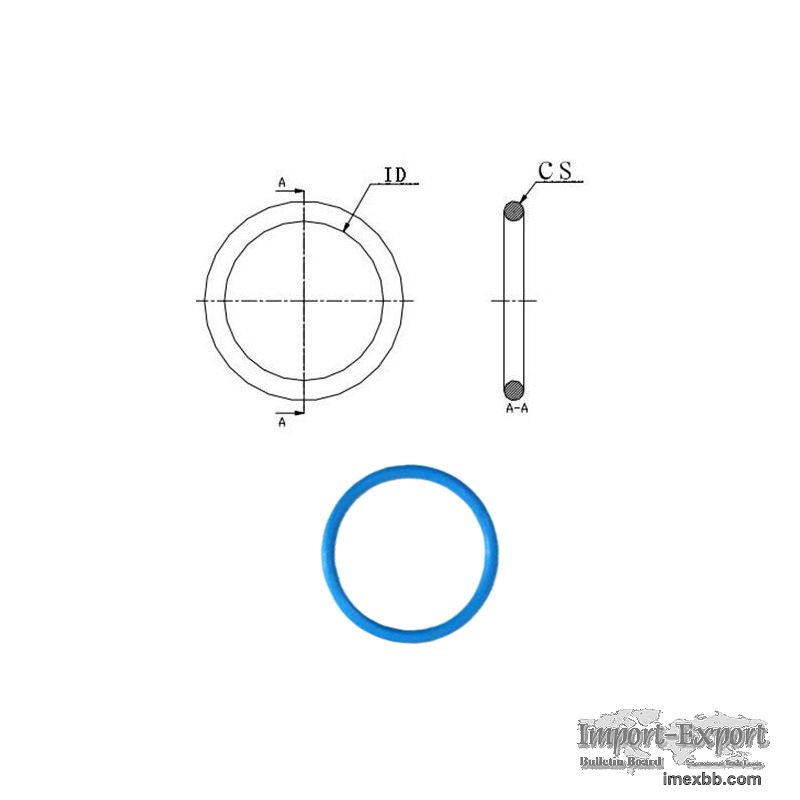 |
 |
Home > Offers to Sell > Others & Excess Inventory > Others
| Contact: | junyingliu |
|---|---|
| Company: | Xingtai Shanfeng special rubber products Co., Ltd |
| Hetou Industrial Zone, Renze District, Xingtai City, Hebei Province | |
| Xingtai City, Hebei | |
| China | |
| Phone: | 18713908608 |
| E-Mail: | |
| Date/Time: | 8/10/23 5:36 GMT |
China Factory Supplier High Quality O Ring
O ring are a popular type of sealing component used in various industries,
including automotive, aerospace, and plumbing. Accurate measurements of O ring
sizes are crucial for ensuring a proper fit and preventing leaks. In this
article, we will provide you with a step-by-step guide on how to measure an O
ring size accurately.
Step 1: Gather the Necessary Tools:
To measure an O ring size, you will need a few essential tools:
1. Caliper: A digital or vernier caliper will be required to obtain precise
measurements.
2. O ring sizing chart: This chart provides standard sizes for O ring and
will help you identify the correct size based on your measurements.
Step 2: Measure the Inner Diameter (ID):
The inner diameter of an O ring refers to the distance across the groove
when the ring is in a relaxed state. Follow these steps to measure the ID
accurately:
1. Carefully remove the O ring from its groove and avoid stretching or
distorting it.
2. Using the caliper, measure the inside diameter of the O ring. Ensure
that the caliper jaws are parallel to achieve an accurate reading.
3. Take multiple measurements at various points around the O ring's
circumference to ensure consistency.
Step 3: Measure the Cross-Sectional Diameter (CS):
The cross-sectional diameter of an O ring represents the thickness or
height of the ring. Follow these steps to measure the CS accurately:
1. Place the O ring on a flat surface, ensuring that it lays flat without
any twists or bends.
2. Gently press the O ring to achieve a uniform shape and height.
3. Position the caliper vertically and measure the height of the O ring.
4. Similar to the ID measurement, take multiple measurements at different
points to ensure accuracy.
Step 4: Choose the Correct O ring Size:
Now that you have obtained accurate measurements for the ID and CS, you can
use an O ring sizing chart to determine the appropriate size. Locate the
measurements on the chart and match them with the corresponding O ring size.
It's important to note that the size of an O ring is often represented by
its ID and CS dimensions. For example, if the ID measures 10mm and the CS
measures 2mm, the corresponding O ring size might be indicated as 10x2mm.
Step 5: Consider Other Factors:
While measuring the ID and CS is the primary method for determining an O
ring size, it's essential to consider other factors that may affect the sealing
application. These factors include:
1. Material Compatibility: Ensure that the selected O ring material is
compatible with the intended application, as different materials have varying
chemical resistance and temperature limits.
2. Compression Percentage: Determining the proper amount of compression for
the O ring is crucial for achieving an effective seal. Consult engineering
specifications or material guides for guidance.
Accurate measurement of O ring sizes is vital for achieving proper sealing
and preventing leaks in various industrial applications. By following the step-
by-step guide provided in this article, you can confidently measure the ID and
CS of an O ring with precision. Remember to choose the correct O ring size
based on your measurements and consider additional factors that may impact the
sealing application. With the right measurements and careful consideration, you
will be able to select and install the perfect O ring for your needs.
Minimum Order: 100 pieces
SOURCE: Import-Export Bulletin Board (https://www.imexbb.com/)
Similar Products:Not exactly what you are looking for? Post an Offer to Buy!
![]()
© 1996-2010 IMEXBB.com. All rights reserved.
|
|
|






